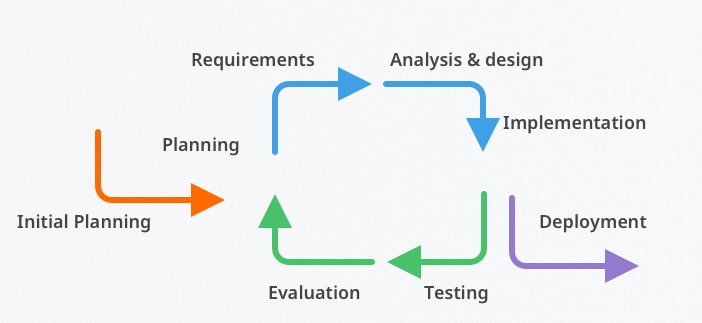More and more people switch to remote work and not just due to the COVID-19 pandemic and 2020 quarantine. Back in 2017, over 5% of Americans were working from home, and the number of people telecommuting worldwide now isn’t declining. But however popular remote work has become, it comes with its own challenges, one of which is engaging remote employees.
This guide will take you through creative ways to engage remote employees without pressure. But let’s begin with some of the challenges you might be facing as finding the right solution should start with identifying the problem.
Challenges faced in making remote employees feel connected
It’s fair to start with defining what employee engagement is and it is basically the degree of how committed members of a team or organization are to its values and goals. How motivated your employees or coworkers are to be the driving force of success and to give their best every day.
Why does it matter? For the reason that engaged employees are more productive and make better decisions. And it also means that team members enjoy their work, which is a healthier approach to any career.
The scale of engagement can be challenged by a remote format of work and in this case, improving engagement is more than just holding remote employees engagement activities. The first step to improvement is acknowledging that telecommuting can cause some issues, including:
Increased social distance
Taking up telecommuting makes employees socially distant from one another. This isn’t only physical but also emotional barriers that arise in communication. Thus, remote employees might find it hard to work as a team or be on the same page, unlike those who work in an office environment.
Reduced human interaction
When working from home, people miss out on opportunities for social interactions, like greeting everyone in the morning or catching up while fixing a drink, and this can be stressful for a lot of people.
Another side effect of reduced human interaction and also a stress factor is FOMO, or fear of missing out. — How’s everyone doing? Should you drop a note and ask how this coworker is doing or are two no more than just work buddies?
Having such doubts create unnecessary stress and affect anyone’s ability to focus on a project’s cause.
Inability to bond
Although remote work is increasing, work from home engagement activities are not.
Telecommuting lacks team gatherings and birthdays celebrations, team bonding get-togethers, and all sorts of team building activities. Employees should be as close as friends are, but if there is reduced communication and interaction, they can’t build a bond with each other.
These issues can be minimized as there are different ways of engaging remote employees.
How to engage remote employees: the road to improvement
#1. Focus on communication
One of the best ways to engage remote employees is to focus on enhancing communication. It acts as the bedrock to a dynamic team. Without effective interaction, it’s easy to misinterpret something and at the end of the day, you might find that your efforts were in vain.
Whether it’s personal or relating to a task, employees should be communicating with each other. And here are a few ways to improve interaction:
Set standards for communication
You can set rules (remote work policies) to make communication among employees more effective, such as assigning the types of discussions that should be held through specific communication channels, e.g. phone calls or video calls or internal communication videos rather than texts. There should also be a consideration for those in different time zones.
Having a separate chat room for discussions not related to work also aids in building relationships within a team. It can also be set as a rule — you can have off-topic discussions in this chat only.
Do regular check-ins
These are increasingly important for offshore employees. They help you understand what your team is working on, the challenges they’re facing, and the level of employee satisfaction. It can be done through regular video conferencing meetings or questionnaires. The whole point is to figure out what works for all of you and what needs to be changed.
Strengthen the bond
Find time for casual conversations or hold virtual get-togethers or icebreaker games unrelated to work. There are different fun activities for remote employees you can come up with or use other companies’ experiences. For example, GitLab encourages interaction through virtual coffee breaks and a Random Room where employees can hang out online and have some face-to-face communication.
Use the right tools
Using the right tools for communication to engage remote employees is also essential. Team chat apps, such as WhatsApp, Slack, and Google Hangouts work best for back and forth communication to finalize task details as well as quick notifications.
Emails are also crucial in working offshore. It’s used in communicating sensitive details and sending general messages; for example, about tasks and procedures. Mailbird unifies all your email accounts and other apps in one place, allowing for quick and effective communication. Business email services include Gmail, ProtonMail, Yahoo, or Outlook.
#2. Measure engagement
A way of sourcing ideas on how to motivate remote workers is through surveys. It could even be your first step — finding out how your employees feel about work, project goals, and the company in general.
An employee engagement survey should measure factors, such as satisfaction, performance, competency, and alignment of the workers to the organization’s goal. Adding open-ended questions to the survey can also help you gauge different explanations for questions that don’t have a Yes or No answer. For example, it can help you understand which employee is most stressed and prevent burnout.
Therefore, try combining different types of questions and include open-ended ones along with ones that ask employees to “rate how they feel. It is worth noting that this survey or feedback provides a 360 review of an employee’s strengths and weaknesses.
After holding a survey and analyzing the answers, it’s good to have a meeting with the Human Resources team or other managers to discuss ideas on how to solve the problems highlighted in the results. Doing this regularly will help take note of any improvements or lack thereof.
You can come up with survey questions on your own or get a premade survey for the employees to fill via tools, such as Officevibe, Zonka Feedback, Culture Amp, or Google Forms.
#3. Share values
Another way to engage employees working from home is by sharing your company’s values with them. When employees understand how important their responsibilities are and how they can make or break the entire project, they can become more involved and find their passion to achieve success in what they do.
It’s not easy to connect employees with the organization’s purpose as everyone is different and holds individual values. Even so, you can follow some of these ideas:
1) Give them a sense of belonging
Having an all-inclusive team is one way to share the values of the organization and encourage employee engagement. No worker should feel left out or isolated, even if everyone is working from home. Take note of this during the team meetings where a particular worker is shy or quiet, and make everyone feel like they belong to the team. This can be achieved through equal treatment.
2) Empower your employees
The best way to empower your employees is by making them a part of the decision making process. Before you decide on something that affects the team, it’s best to ask for feedback. This makes people feel like they’re an essential member of the organization and inadvertently improves engagement.
3) Define the goals clearly
Whether in remote or offline workplaces, productivity won’t be possible without clearly defined goals. Set measurable and clear objectives for your remote team and ensure they aren’t lost in translation. You can do the latter by simply asking your employees to explain how they understand a goal or task.
Ensuring everyone is on the same page about the goals is also crucial. You can use shareable content like collaborative online documents or create explainer videos. When your team is on the same page, things can happen pretty synergistically.
4) Give them relevant information
Without relevant information to guide workers through their tasks can lead to the wrong results. So make sure that they have up-to-date guides and stats to all work-related aspects, and they don’t have to go searching for the relevant data. Unless, of course, it’s their direct responsibility to source information.
5) Encourage trust
Encouraging trust is a meaningful way to share values and increase engagement. You can start by showing your employees that you trust them so that they can begin to reciprocate. Delegate decisions and important tasks into their hands for starters, and be transparent with them.
#4. Develop a healthy corporate culture
Company culture denotes ethics, values, and behaviors in a work environment for the entire team. When you have a positive and healthy corporate culture, it’s easier for your employees to feel satisfied with their work conditions and engage with work. This is also beneficial for their mental health and well-being. The best kind of corporate culture to adopt when considering how to make the virtual teams feel connected is one that puts the workers or team first.
You can develop a healthy team-first corporate culture by:
- Hiring right — Your corporate culture starts with the kind of people you allow into your remote team. It’s essential to hire those who will represent the company’s values properly and be a cultural fit. Also, they should be aligned with the goal of the organization.
- Giving feedback — Rather than saying, ‘Good job,’ or ‘Keep it up,’ when your employees finish a task, giving feedback is essential. Your feedback should be in the form of constructive criticism to encourage your employees to do better. Give positive feedback either to the team or to an individual who finishes a task, and if needed, mention the areas where they need to improve.
- Rewarding employees — Setting up a rewarding process for your employees is also a good way to motivate and encourage them to do better. You should recognize everyone’s contribution to the project, so no one feels left behind.
- Giving practical benefits — Give out practical benefits, which are perks that your remote teammates will need. This can include a vacation stipend or better technological tools.
- Being flexible — You have a more productive workforce when you allow flexibility in their schedules because strict deadlines might cause stress and make them overwork without getting enough sleep. But this also means your own flexibility as a manager to be able to adjust to a new schedule or a new rule and teach your team to do the same.
- Being open to communication — Apart from giving feedback, you should show your employees that you’re open to receiving feedback too in a bottom-top communication system. You can also find the time and have open ears to your worker’s plights.
#5. Use the AGILE methodology
If you’re not using AGILE yet, this methodology is great because it improves teamwork and organization. The practice encourages team interaction, working software, customer collaboration, and adapting to change.
The AGILE methodology is suitable for software developers/engineers working from home because it:
- Uses an iterative approach — The methodology uses a short time frame approach. Basically, the project is divided into multiple phases with the same structure of Define, Build, and Release. The approach also makes work more flexible for a remote development team because it means that none of the specialists will lack work at any given stage of the project.
- Allows for early customer feedback — Since changes will be made on the project over and over again, it allows the team to receive feedback early from the customers by presenting them with the first version. Instead of waiting for the project to be fully completed.
- Is time-saving — It allows smaller projects to be executed within two to four weeks. It’s especially better for smaller projects which can be implemented quickly.
- Allows for continuous testing and fixes — With the iterative approach, there is constant testing, allowing the employees to fix errors as they arise until there are no more problems.
- Improved employee engagement — It allows the developers to work closely together and improves communication, leading to better employee engagement.
Wrap up
Engaging remote employees is a continuous process in any organization. One has to continually look for ways to improve communication among the employees and gauge feedback to regularly measure engagement.
Sharing values and developing the right corporate culture is also vital, not only to the engagement of the employees but also to increasing productivity. If you have a team of software developers and engineers, the AGILE methodology will go a long way in invoking growth.
Downloading Mailbird for your team will also, the incorporated email service will go a long way in engaging remote employees, as well as helping you effectively manage emails, other communication and productivity apps in one place, and building healthy relationships among workers.








